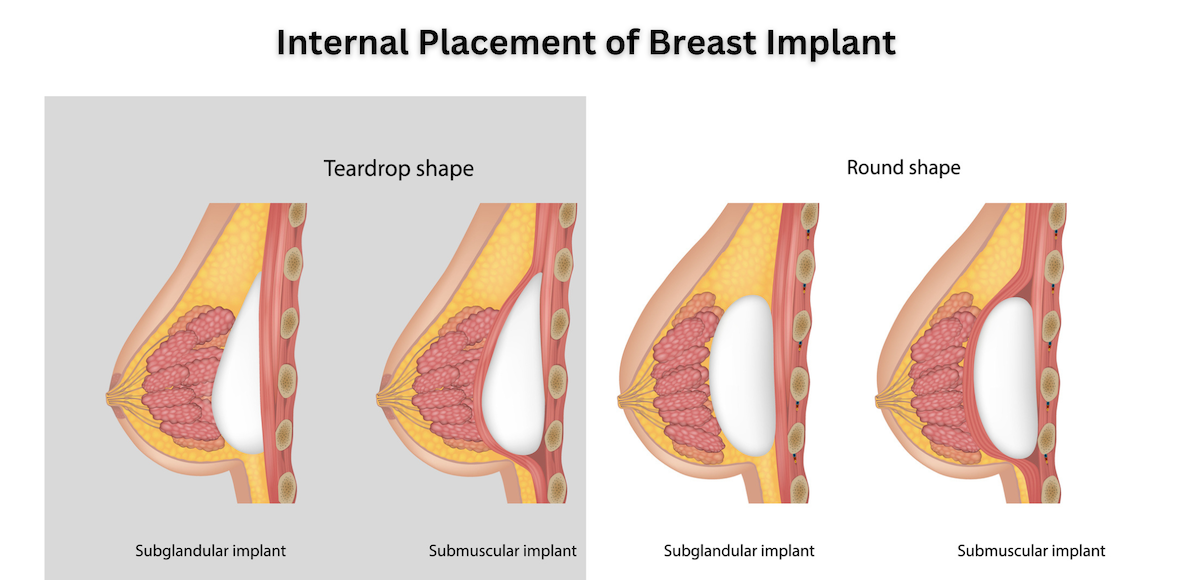Breast Augmentation Las Vegas
Breast augmentation is a very popular cosmetic procedure that has seen a growing demand for women worldwide.
Breast augmentation aims to alter the size or shape of a woman's breasts for aesthetic or medical purposes. The procedure can be completed using implants, fat transfer methods, or both. Depending on the chosen method and other factors such as body type and desired results, patients may receive different types of implants or experience different outcomes following surgery.
When considering a breast augmentation procedure, patients must understand their options and discuss

Reasons For Breast Augmentation Surgery
Have you ever considered having breast augmentation surgery? It is a procedure that has become increasingly popular in recent years, with many women seeking an improved physical appearance. But why do people choose to undergo this type of surgery? This section will explore the reasons why a person might consider breast augmentation.
First, one of the primary motivations for many people is to improve their body image and self-confidence. By increasing the size and shape of their breasts, some individuals feel that they can enhance their overall physical appearance. Additionally, those who have experienced significant weight loss or pregnancy may wish to restore their body shape or improve the symmetry between the two breasts. Many of our patients want to achieve a true hourglass figure.
Second, breast augmentation can relieve physical discomfort caused by certain medical conditions. For instance, some women experience back pain due to having disproportionately large breasts, which can be alleviated through reduction surgery. On the other hand, those with underdeveloped breasts may benefit from augmentation as it increases volume and relieves issues such as neck pain caused by inadequate tissue coverage.
Third, some individuals elect to have breast augmentation surgery for reconstruction after a mastectomy or lumpectomy has been carried out due to cancer treatment. In addition to restoring the physical shape of the chest area, this procedure can also help people regain confidence in their bodies which may have been affected by illness or trauma.
Finally, those looking for a more subtle change in appearance may opt for a 'boob job' as it does not require extensive changes and can be tailored to individual needs to achieve desired results without drastic changes being made. All these factors make breast augmentation an attractive option for many seeking aesthetic enhancement or medical relief.
Pre-Surgery Requirements
The journey to a new you is exciting, and prepping for breast augmentation surgery can be exciting and nerve-wracking. It is important to follow the guidelines provided by your surgeon to ensure the best outcome possible. To prepare for the surgery, patients are encouraged to schedule a consultation with a board-certified surgeon, undergo an imaging test, undergo blood tests and other medical evaluations, and follow any special instructions the surgeon gives before surgery.
Before the day of surgery arrives, patients should confirm their appointments and have their prescriptions filled. Patients should discuss any questions or concerns with their surgeon during their consultation and ensure they understand what will happen during and after the procedure. They should also discuss what anesthesia will be used during the procedure and which medications they must take before and after surgery.
In addition, patients must arrange for someone else to drive them home from their appointment since anesthesia can cause drowsiness or confusion. Moreover, to minimize the risk of complications during recovery, patients limit physical activity before surgery; this includes avoiding any strenuous activities that could cause increased swelling or pain around the breasts. Furthermore, patients must stop smoking at least six weeks before their scheduled surgery date for optimum results, as nicotine can significantly slow healing time and increase bleeding.
Patients should be fully informed about all aspects of breast augmentation to stay healthy throughout their surgical experience. If patients follow these guidelines closely before their scheduled appointment, they will be well-equipped for successful results from this life-changing procedure.
Recovery And Aftercare Instructions
Once the breast augmentation surgical procedure is complete, the patient must take steps to ensure a safe and successful recovery. The following instructions will help the patient prepare for post-operative care and recovery.
The first step in recovery is rest. Immediately after surgery, patients should plan on resting in bed or on a couch for two to three days while they experience some discomfort. During this process, they should avoid any strenuous activity such as lifting or exercising. It is also essential to avoid placing any pressure on the breasts directly or through clothing or bras.
Your surgeon will likely wrap your chest and may recommend a soft bra 24 hours after surgery. While wearing this bra, it is important that the patient only use their hands to adjust or remove it and not pull on the straps – doing so can cause post-surgical damage and complications. Many surgeons have patients where a compression breast band to keep implants from shifting during the healing process. The Mermaid band is one of the most comfortable. A patient designed it with the help of her plastic surgeon for utility and comfort. A well-fitting compression band can also minimize the chance of capsular contraction, which can be painful and affect if breasts look natural.
Stitches will be removed within seven to ten days after surgery; however, these may dissolve independently depending on the type used during surgery.
- To keep swelling down during recovery, patients should sleep in an elevated position with extra pillows underneath their back and head for at least one-week post-surgery.
- Ice packs may also be used intermittently throughout the day but should not be placed directly onto the skin – instead, use a clean cloth between the ice pack and the skin surface.
- If your doctor prescribes antibiotics, take them as directed until all pills are finished, even if symptoms have subsided before.
Patients are advised to return for all follow-up appointments as instructed by their doctor to ensure that everything is healing properly and there are no signs of infection, encapsulation, or other complications arising from surgery. Doing so will help ensure a successful breast augmentation procedure and a healthy recovery afterward.
Cost Considerations for Breast Augmentation Las Vegas
The cost of breast augmentation can be likened to a journey in which the destination is an improved appearance and self-confidence. As with any journey, several considerations must be considered when estimating the overall cost. The first is whether the patient will opt for an inpatient or outpatient procedure. Inpatient procedures require more medical staff and postoperative monitoring, increasing expenses. On the other hand, outpatient surgeries are typically less costly but may involve additional follow-up visits and longer recovery times.
In addition to the procedure type, other factors affecting breast augmentation costs include the type of implant used, anesthesia fees, operating room facility fees, pre-operative lab tests or X-rays, and post-operative care. Depending on various geographic locations and the surgeon's popularity, prices can vary significantly due to differences in overhead costs such as rent and staff salaries. According to the American Society of Plastic Surgeons, breast augmentation can cost anywhere between $6,000 to $12,000. If you have other procedures, like a breast lift, costs will naturally be higher.
For patients who don't want to pay out of pocket for their breast augmentation procedure, for good credit, there are financing options available through medical loan providers or credit cards with special financing options for medical treatments.
In deciding about breast augmentation costs, it's important to consider all associated expenses and expected outcomes. Many women report feeling more confident after their surgery and having improved body image satisfaction that far outweighs monetary costs. The best formula for any cosmetic procedure is cost + value = satisfaction.
Choosing The Right Surgeon
The decision to undergo a breast augmentation is personal, and the choice of surgeon is an important step in achieving successful results. Finding the right surgeon can be likened to a voyage of discovery; it involves uncovering the knowledge and experience needed to ensure successful outcomes. A thorough research process should be undertaken before any decisions are made.
When searching for a qualified professional, it's important to consider experience, qualifications, and accreditation. Choosing a board-certified surgeon with extensive experience performing breast augmentation surgeries is advisable. This will help minimize surgical risks and optimize outcomes.
Patients should feel empowered during their consultation with the chosen doctor, asking questions designed to understand technical details such as methods and techniques employed. They must also feel comfortable communicating openly with their doctor regarding their expectations, needs, concerns, and goals for the surgery so that all parties are on the same page throughout the process.
To make an informed decision when choosing a surgeon, patients should do their due diligence when researching potential candidates while also considering comfort levels during consultations and communication styles between patient and doctor. Individuals can significantly increase their chances of achieving desired results from breast augmentation surgery by taking these steps before selecting a surgeon.
Long-Term Results
Breast augmentation is a procedure proven to provide long-term results for women. Many patients report feeling more confident in their bodies after undergoing this procedure. In addition, the effects of the procedure often last for many years, depending on factors such as age and lifestyle habits.
There are several considerations to make when evaluating long-term results from breast augmentation:
Longevity: Breast implants typically last between 10 and 20 years before they need to be replaced or removed due to wear and tear or other factors such as age or lifestyle habits.
Maintenance: Follow-up visits with your doctor are recommended to evaluate silicone implant integrity over time. These visits should include physical examinations and imaging tests such as mammograms or MRIs to evaluate the condition of your implants in the case of silicone gel.
Self-care: Proper dieting habits, exercise regimens, and avoiding smoking can all help prolong the longevity of your implants by reducing risk factors associated with implant rupture or leakage.
It is important to note that every patient will experience different results from breast augmentation based on individual factors such as age, lifestyle habits, genetics, and pre-existing conditions. Therefore, patients must thoroughly discuss all aspects of this surgery with their doctor before deciding whether it is right.

Frequently Asked Questions
What Is The Average Age Of People Who Opt For Breast Augmentation?
The average age of people seeking breast augmentation is a common question in the medical field. It is important to understand the demographic trends among those seeking this procedure, as many factors may influence their decision. As such, it is worth examining the current research about the average age of people who opt for breast augmentation.
Statistics show that most women who opt for breast augmentation are between 20-52 years old. This age range accounts for nearly 80% of all breast augmentations performed annually in the United States. Patients are generally younger than those with other cosmetic surgery procedures, such as facelifts.
Several factors may influence a woman's decision to pursue breast augmentation at any age. Many patients feel their breasts are too small or uneven after puberty and seek this procedure for aesthetic reasons. Others feel their breasts have begun to sag with age and want to restore them to a youthful appearance. Additionally, some women may choose this procedure due to physical discomfort caused by asymmetrical breasts or large breasts that cause back pain or skin irritation.
Are There Any Long-Term Side Effects?
As a surgeon, it is imperative to consider the long-term ramifications of any procedure. Breast augmentation is no exception; it is essential to be aware of the potential side effects patients may experience in the years following surgery. Like a jigsaw puzzle, all pieces must be considered when assessing the overall outcome.
The possible side effects of breast augmentation can vary depending on the type of implant used and the patient's lifestyle choices. Generally, patients can expect to experience temporary discomfort and bruising for several weeks after surgery. In rare cases, some women may develop capsular contracture, which causes hardening and distortion of their breast implants. Other common long-term side effects include implant deflation or rupture, infection, and changes in sensation or sensitivity around the breasts or nipples. While these issues are not life-threatening, they should still be considered when making an informed decision about whether or not to undergo breast augmentation surgery.
It is also important to note that some studies have suggested that there may be an increased risk of developing certain types of cancer associated with breast implants. However, more research must be done before any definitive conclusions can be drawn on this topic. Some experts also recommend regular monitoring by a doctor to check for potential signs of complications due to aging implants over time.
To minimize potential risks associated with breast augmentation surgery, surgeons and patients must know the potential long-term side effects before deciding whether to proceed. Patients should also seek out experienced surgeons who specialize in this type of surgery to ensure they receive optimal care and results from their treatment plan. Ultimately, it is up to each patient and their doctor to decide if breast augmentation is right for them and, if so, what type of implant will best suit their needs and desired outcome.
Are There Any Financing Options Available?
When considering breast augmentation, financing options may be a key factor in decision-making. Understanding the costs of this procedure and the potential financing opportunities available can help individuals decide about their treatment.
Many healthcare providers offer flexible payment plans to cover the cost of breast augmentation surgery. Some even accept major credit cards, allowing patients to pay for the procedure over time. Additionally, external financing companies specialize in cosmetic surgery loans and offer competitive interest rates and repayment terms.
However, it is important to note that these financing options do not typically cover additional costs such as anesthesia fees or post-operative care. Individuals should also consider applicable taxes or fees when selecting a payment plan for breast augmentation procedures. Furthermore, many providers require a down payment before treatment to secure their services. As such, it is recommended that individuals carefully review all terms of a proposed loan before signing any contract agreements.
In addition to traditional financing methods, some healthcare providers have begun offering promotions or discounts on cosmetic treatments such as breast augmentation surgery. These promotional offers may provide an additional opportunity for individuals to save money on their procedures while still obtaining quality care from experienced surgeons. Ultimately, individuals are encouraged to carefully research all available financial options before cosmetic surgery to make an informed decision about their treatment plan.
How Long Does It Take To See Results?
The outcome of breast augmentation surgery is generally visible immediately, although the full result may take several weeks to months. After the procedure, the initial swelling and bruising will gradually subside as the body heals. During this time, patients can expect to experience some discomfort and sensitivity in their breasts. This is completely normal and should dissipate over time.
The time it takes for a patient to see results from breast augmentation surgery will depend on several factors, including the type of implant used, the size of the implant chosen, and the individual's tissue healing speed. Generally speaking, most patients report seeing an improvement in their breast size and shape within two to three weeks post-surgery.
During this healing period, patients are advised to avoid strenuous activities such as exercising or heavy lifting until their surgeon has cleared them. Patients must wear a special support bra to ensure optimal comfort and reduce post-operative swelling or trauma. Additionally, following up with your doctor for routine checkups throughout your recovery is important to monitor your progress.
Prospective breast augmentation patients must remember that each individual's recovery process will be unique based on their anatomy and other health factors. It is best to consult with a board-certified cosmetic surgeon who can provide an accurate timeline for when you can expect to see full results from your surgery.
Furthermore, these devices can be uncomfortable and require frequent adjustments to maintain desired effects.
Ultimately, when deciding whether to pursue breast augmentation, it is important to understand your surgical and non—surgical options and their associated risks and benefits. With careful consideration of all factors, one can make an informed decision that best suits their needs and lifestyle.



